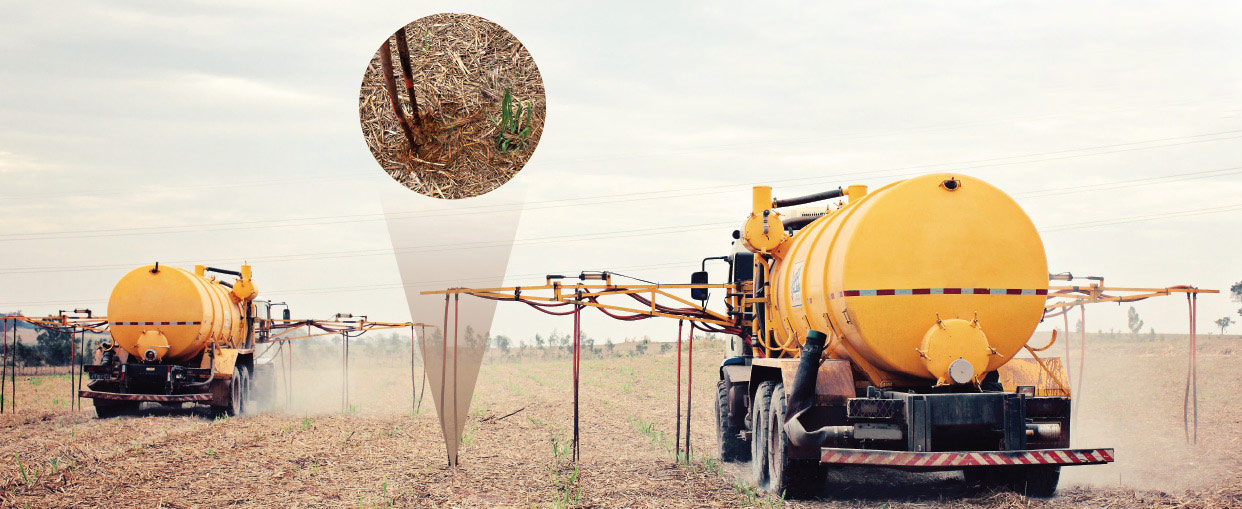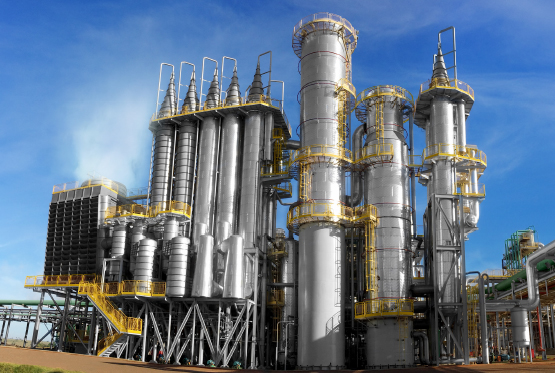PRODUCTION OF ETHANOL WITH THE CONCENTRATED VINASSE
Vinasse concentration: why invest in this technology?
Undoubtedly, vinasse concentration technology has emerged as a great alternative for the industrial sector. This is because it reduces the volume of waste, reduces operating costs and makes management more sustainable, since it meets environmental and socioeconomic demands.
Next, learn more about vinasse concentration, the advantages and get to know some cutting-edge equipment developed by Citrotec®.
Vinasse concentration systems
Vinasse has long been the subject of research by institutes, universities and companies. The objectives are mainly to find more and more efficient techniques to use it and ways to reduce costs and impact on the environment.
In this scenario, the vinasse concentration system works by transforming a major environmental and financial problem into a true economic and sustainable solution.
Among its main applications are the manufacture of fertilizer and DDG in the case of vinasse from corn. Currently, there are two technologies that compact organic material: the already traditional concentration by evaporation and the concentration by reverse osmosis membranes.
The latter still needs adaptation to the climatic conditions of Brazil. In addition, it does not have the same concentration potential as the evaporation method. For example, it reaches only 12% of solids content against approximately 20% of the concentration by evaporation.
The technique of concentration of vinasse by evaporation offers more efficient systems, with equipment of multiple effects by descending turbulent mist. In it, the operation happens with low pressure vapors, with minimum energy consumption and less problems due to incrustations. In addition, it is more compact compared to other types.
The concentration of vinasse by evaporation is the most used by mills today.
Vinasse concentration technologies - Ecovin® and Ecovin JL®
The principle of evaporation by descending turbulent mist is applied by Citrotec® in two vinasse concentrating equipment: Ecovin® and Ecovin JL®.
Ecovin® is a powerful evaporator of concentration of vinasse that, using the principle of descending turbulent mist, reduces the volume of vinasse by 10 times.
This allows the concentrated vinasse to be used for various purposes, such as organic liquid fertilizer, which brings great savings in transportation and fertilization in the field. Furthermore, it allows the use of low pressure steam (V1).
Ecovin® is also used in the concentration of corn vinasse. The benefit of operating a corn ethanol vinasse concentration plant is to turn the plant into a closed circuit, where there is no vinasse going to the field. Vinasse is incorporated into the DDG.
Ecovin JL®, on the other hand, had its project developed in a partnership between Citrotec® and ETECH, of the distillery scientist Jaime Lacerda, an icon in the sugar-energy sector. Potent evaporator of concentration of vinasse, Ecovin JL® is a concentration system that, using the principle of descending turbulent mist and coupled to the distillation columns, allows the production of alcohol with the vinasse already concentrated, without additional consumption of steam.
Ecovin JL®, maintains continuous improvements in partnership with ETECH. Its system of concentration of vinasse for corn, also uses the principle of descending turbulent mist, coupled to ETECH distillation columns, to produce corn ethanol with concentrated vinasse without additional steam consumption. Corn vinasse is incorporated into the DDG.
The implementation of this technology is aligned with the production cost of concentrated vinasse versus the cost of road transportation to be used in the field, depending on the degree of concentration associated, which will indicate the size of the equipment and the energy expenditure. The concentration of vinasse, in addition to the production of an organic fertilizer with management similar to the mineral fertilizer, it also produces a vegetable condensate, which depending on its quality, can be reused in the process, allowing the use of the liquid from the sugar cane itself, and consequently reducing the capture of water from water resources.
Vinasse concentration – advantages
The environmental, social and economic benefits of vinasse concentration systems are undeniable. Experts calculate that the return on investment in this technology may vary, depending on the available financing lines, the cost of fertilizers and the savings on logistics.
There is also a decrease in the amount needed, since the concentrated waste can cover up to twice the area compared to in its original form. In addition, improper application can cause an imbalance of nutrients, accumulating potassium in the soil and contaminating it with underground water reserves.
Check out the main benefits of vinasse concentration:
• Decrease in volume;
• Low energy consumption;
• Decrease the need to collect and use water;
• Reuse of water withdrawn from vinasse in industrial and agricultural processes;
• Decreased soil saturation;
• Less risk of environmental contamination;
• Reduction of the presence of stable flies and other pests;
• More sustainable process and within environmental laws;
• Lower cost with fertigation logistics, such as transportation and equipment;
• Easy and automated operation;
• Lower investment cost, with good financial return;
• Equipment made of good materials, such as stainless steel;
• Less fouling, which reduces the frequency of maintenance;
• Models using autonomous evaporative condensers, which eliminate an external water source and cooling towers;
• Vinasse can be incorporated into the DDG;
• Better use of vinasse nutrients by the soil;
• Decrease in the purchase of potassium.
The various advantages of the vinasse concentration system in the economy, the environment and society are undeniable. In addition, it presents an attractive return of investment on the industrial sector, which should increasingly adopt this technology.

Agronomic Benefits:
• Rationalization of K and equalization of its content in the soil with a level of greater agronomic result, allowing the use of precision agriculture.
• Recycling of K in 100% of the cultivated area.
• Possibility of formulating a single fertilizer for stubble (enrichment with N, P2O5 and micronutrients).
• Reduction of the costs of operation of stubble.
• Increase of productivity in the order of 5.0 - 8.0 t / ha.
• Rationalization of transport and application logistics.
• Environmental suitability to the process.
• Stable fly proliferation control.
• Biological fertilization.
Specialists Comment: Stable Fly
• The insect multiplies in the remains of the sugar cane irrigated with fresh vinasse and in the vinasse channels that are eliminated with the concentration.
• This insect finds a place to reproduce and feed on the fresh vinasse used for fertigate.
• They cause great losses for agriculture.
• The region with the greatest proliferation is surrounded by sugar cane, irrigated with fresh vinasse due to its puddling.
• The application of concentrated vinasse is the most suitable for the control of the fly.

